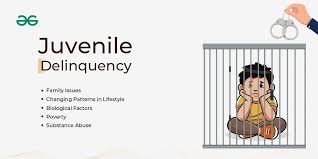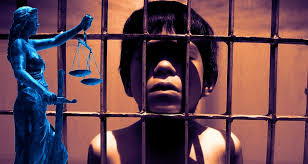Juvenile Laws at Panama
Panama has a juvenile justice system that is designed to ensure that minors who commit crimes are treated according to their age and level of development. The system focuses on rehabilitation, education, and reintegration into society, emphasizing the protection of children's rights in line with international standards, such as the United Nations Convention on the Rights of the Child (CRC).
Here's an overview of the juvenile laws and juvenile justice system in Panama:
1. Definition of a Juvenile:
In Panama, juveniles are generally defined as individuals who are between 12 and 18 years old.
Children under the age of 12 are not considered criminally responsible under Panamanian law and cannot be held accountable in the criminal justice system.
For minors aged 12 to 18, criminal responsibility is determined on a case-by-case basis, taking into account the nature of the crime and the minor's mental and emotional development.
2. Legal Framework:
The Panamanian Penal Code (Código Penal) and the Child and Adolescent Code (Código de la Niñez y la Adolescencia) provide the legal foundation for how minors are treated in the justice system.
The Child and Adolescent Code, enacted in 1995, is particularly important as it outlines the rights of children and adolescents, as well as the procedures for handling juvenile offenders. This code ensures that minors are treated in a way that prioritizes their rehabilitation and reintegration into society.
Panama is a signatory to the United Nations Convention on the Rights of the Child (CRC), and the principles of the CRC are reflected in the national laws, including the emphasis on rehabilitation and the protection of the minor’s rights.
3. Age of Criminal Responsibility:
The age of criminal responsibility in Panama is 12 years old. This means that children who are 12 or older can be held criminally responsible for their actions, although the severity of the punishment is usually less than for adults.
Children under 12 are not criminally responsible, and if they commit an offense, they are typically referred to social services, not the criminal justice system.
4. Juvenile Justice System:
Panama’s juvenile justice system is designed to treat young offenders in a manner that acknowledges their age, mental state, and the fact that they are still developing. The system is centered on rehabilitation and the best interests of the child, with the ultimate goal of reintegrating minors into society.
Juvenile Courts (Tribunales de Menores): Juvenile offenders are typically processed through specialized juvenile courts, which focus on addressing the needs and rights of minors. These courts are responsible for determining the appropriate response to offenses committed by children and adolescents.
Judges for Juvenile Cases: Judges who work in these specialized courts are trained to understand the psychological, social, and educational needs of juveniles, and decisions are made with a focus on the minor's development and rehabilitation.
5. Types of Measures and Sanctions:
Rehabilitation over Punishment: The primary focus of Panama's juvenile justice system is on rehabilitation rather than punishment. This includes various educational and corrective measures that aim to address the underlying causes of criminal behavior and reintegrate the juvenile into society.
Alternative Measures: For minor offenses, juveniles may be subjected to alternative measures such as:
Community service: Juveniles may be required to perform community service as a way to give back to society and atone for their actions.
Educational programs: Juveniles may be placed in specialized educational or vocational training programs, aimed at preventing future criminal behavior.
Psychological counseling: Psychological or psychiatric counseling may be provided to address mental health issues, substance abuse, or behavioral problems.
Probation: Juveniles may be placed under probation, where they are supervised by probation officers and must comply with certain rules, such as attending school or staying away from criminal activities.
Detention: If a juvenile commits a more serious offense or is deemed to be a threat to society, they may be placed in juvenile detention. Detention is meant to be a last resort and is usually accompanied by educational and rehabilitative programs.
Juvenile Detention Centers: Panama has facilities for minors who require secure detention. These centers are intended to rehabilitate rather than punish and provide educational and vocational opportunities for detained juveniles.
6. Rights of Juveniles:
Right to Legal Representation: Juveniles have the right to legal representation during their trial. If they cannot afford an attorney, one will be provided for them.
Right to a Fair Trial: Juveniles are entitled to a fair trial, with proceedings held in accordance with their rights under the law. Special procedures exist to ensure that minors are not treated in the same way as adults in the criminal justice system.
Right to Privacy: The identity of juveniles is protected under Panama’s law, and their cases are generally not made public. This is to protect the minor from social stigma and ensure their chances of successful reintegration.
Right to Protection from Harsh Treatment: Juveniles are protected from cruel, inhuman, or degrading treatment while in detention. Their treatment should be in accordance with the principles of dignity and respect.
Right to Education: Even if a juvenile is detained, they have the right to continue their education. Juvenile detention centers offer educational programs to ensure that minors do not miss out on schooling while serving their sentences.
7. Preventive Measures and Early Intervention:
Social Services and Family Support: Panama places a strong emphasis on early intervention and prevention programs. Social workers, schools, and community programs work together to address the root causes of delinquency, such as poverty, family dysfunction, and lack of education.
Community-based Programs: Local communities play an important role in preventing juvenile delinquency. Programs that promote social inclusion, vocational training, and youth engagement are vital tools for preventing minors from entering the justice system.
Restorative Justice: Restorative justice practices, which focus on repairing the harm caused by criminal behavior through dialogue between the offender, the victim, and the community, are becoming more common in Panama. This approach is aimed at reducing recidivism and promoting healing for both the victim and the offender.
8. Juvenile Detention and Rehabilitation Facilities:
Panama operates a number of juvenile detention centers and rehabilitation programs for minors who have committed more serious offenses. These centers provide a secure environment where juveniles can receive education, psychological care, and vocational training.
Detention is seen as a last resort, and the focus is on ensuring that juveniles are rehabilitated and reintegrated into society once their sentence has been served.
9. Challenges and Limitations:
Overcrowding: Like many countries, Panama’s juvenile detention centers sometimes face overcrowding, which can make it more difficult to provide individualized care and rehabilitation for minors.
Resource Limitations: There may be limitations in the resources available for juvenile offenders, including access to mental health professionals, education, and vocational training programs.
Disparities in Access: Access to rehabilitation programs and social services may vary in different parts of Panama, particularly between urban and rural areas.
10. International and Regional Commitments:
Panama is a signatory to international conventions such as the United Nations Convention on the Rights of the Child (CRC), and it is committed to ensuring that its juvenile justice system upholds the rights of children and minors.
The country also participates in regional efforts through organizations like the Organization of American States (OAS), which works to strengthen juvenile justice systems and ensure that minors' rights are respected across the Americas.
Conclusion:
Panama's juvenile justice system places a strong emphasis on rehabilitation, education, and the protection of children's rights. With a focus on the best interests of the child, the system seeks to reintegrate minors into society through various measures such as community service, counseling, and educational programs. While challenges such as overcrowding and limited resources exist, Panama continues to make efforts to improve its juvenile justice system and align with international human rights standards. The system aims to provide minors with the support and guidance they need to become productive and law-abiding citizens.





0 comments